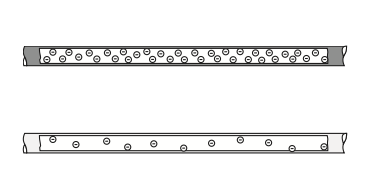Conductor resistance is an important concept in the field of electrical engineering. It refers to the ability of a conductor to resist the flow of electric current through it. In this blog, we will discuss conductor resistance, what factors affect it, and how it can be calculated.
What is Conductor Resistance?
Conductor resistance is the measure of the opposition that a conductor offers to the flow of electric current through it. It is determined by the properties of the conductor material, such as its resistivity, length, and cross-sectional area. The resistance of a conductor is directly proportional to its length and inversely proportional to its cross-sectional area. In other words, the longer and thinner the conductor, the higher its resistance.
Factors Affecting Conductor Resistance
The resistance of a conductor is affected by various factors, including the material of the conductor, temperature, and frequency of the electric current.
Material: The resistance of a conductor depends on the material it is made of. Materials that have high resistivity, such as tungsten, have a higher resistance than those with low resistivity, such as copper.
Temperature: The resistance of a conductor also changes with temperature. In general, the resistance of a conductor increases as its temperature increases. This is because an increase in temperature causes the atoms in the conductor to vibrate more, which leads to more collisions between the electrons and atoms, and thus, more resistance.
Frequency: The resistance of a conductor also varies with the frequency of the electric current passing through it. At high frequencies, the resistance of a conductor is higher than at low frequencies. This is because at high frequencies, the electrons in the conductor experience more collisions with the atoms, which leads to higher resistance.
Calculating Conductor Resistance
The resistance of a conductor can be calculated using Ohm’s law, which states that the resistance (R) of a conductor is equal to the voltage (V) across the conductor divided by the current (I) passing through it. Mathematically, this can be represented as R = V/I.
The resistance of a conductor can also be calculated using the formula R = ρL/A, where ρ is the resistivity of the conductor material, L is the length of the conductor, and A is its cross-sectional area. This formula shows that the resistance of a conductor is directly proportional to its length and resistivity and inversely proportional to its cross-sectional area.
Conclusion
Conductor resistance is an important concept in electrical engineering, as it affects the flow of electric current through a conductor. The resistance of a conductor is determined by its material, temperature, and frequency of the electric current passing through it. Conductor resistance can be calculated using Ohm’s law or the formula R = ρL/A. Understanding conductor resistance is essential for designing and analyzing electrical circuits.

Resistance is a property that all conductors possess to some degree. It is the ability of a conductor to impede the flow of electric current through it. The unit of resistance is ohms (Ω). Conductors with a lower resistance value are considered more conductive than those with higher resistance values.
The resistance of a conductor can be affected by several factors, including the material it is made of, its length, its cross-sectional area, and its temperature. The resistivity of a material is a measure of its intrinsic resistance to the flow of electric current. Conductors made of materials with high resistivity values, such as tungsten, have higher resistance than those made of materials with lower resistivity values, such as copper.
The length of a conductor also affects its resistance. The longer a conductor is, the higher its resistance will be. This is because the electrons in the conductor have to travel a longer distance, which increases the likelihood of collisions with the atoms in the conductor material. This leads to more resistance.
The cross-sectional area of a conductor is another factor that affects its resistance. The larger the cross-sectional area of a conductor, the lower its resistance will be. This is because a larger cross-sectional area provides more space for the electrons to move through the conductor, which reduces the likelihood of collisions and leads to less resistance.
Temperature is another factor that affects the resistance of a conductor. In general, the resistance




